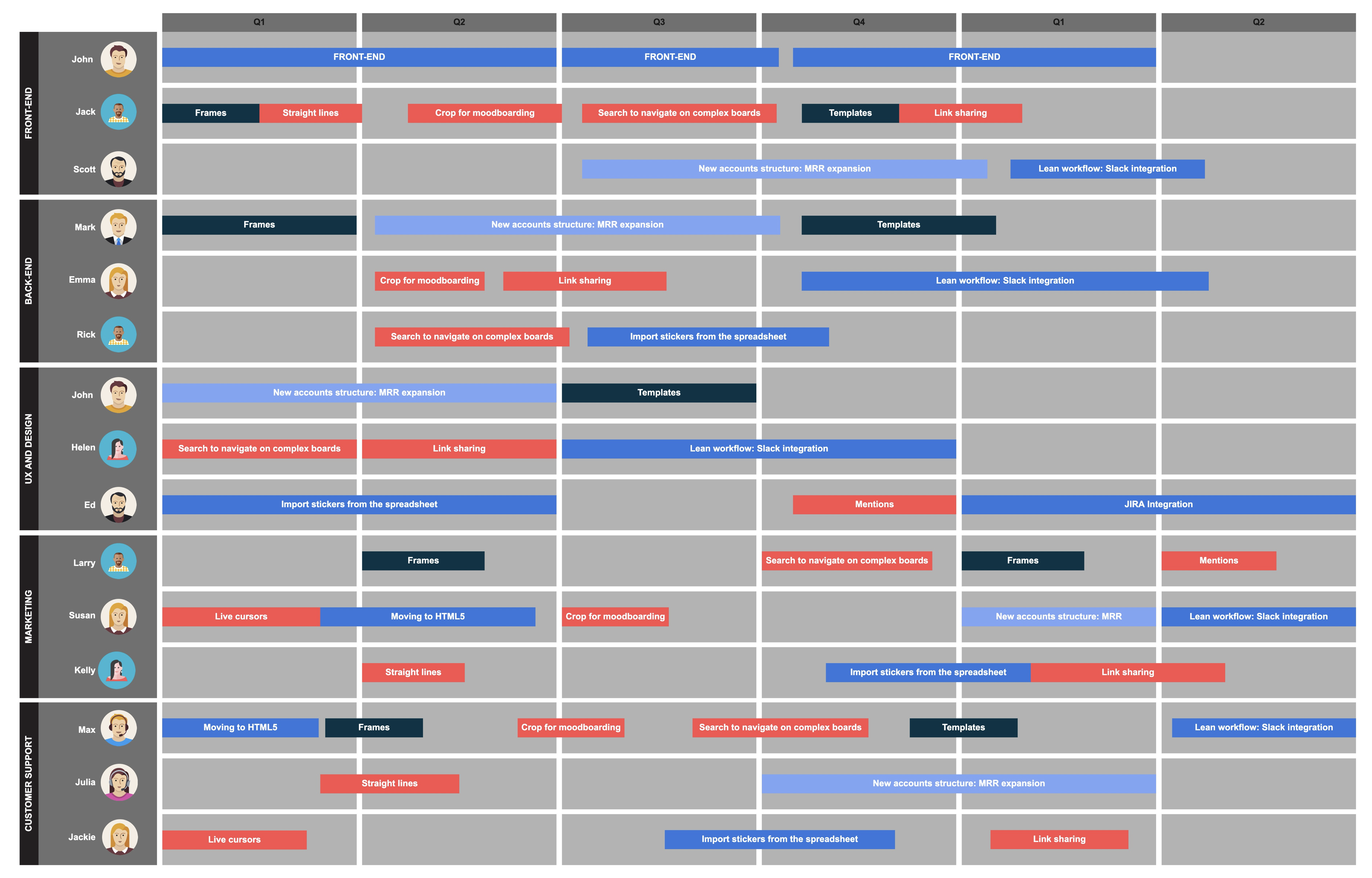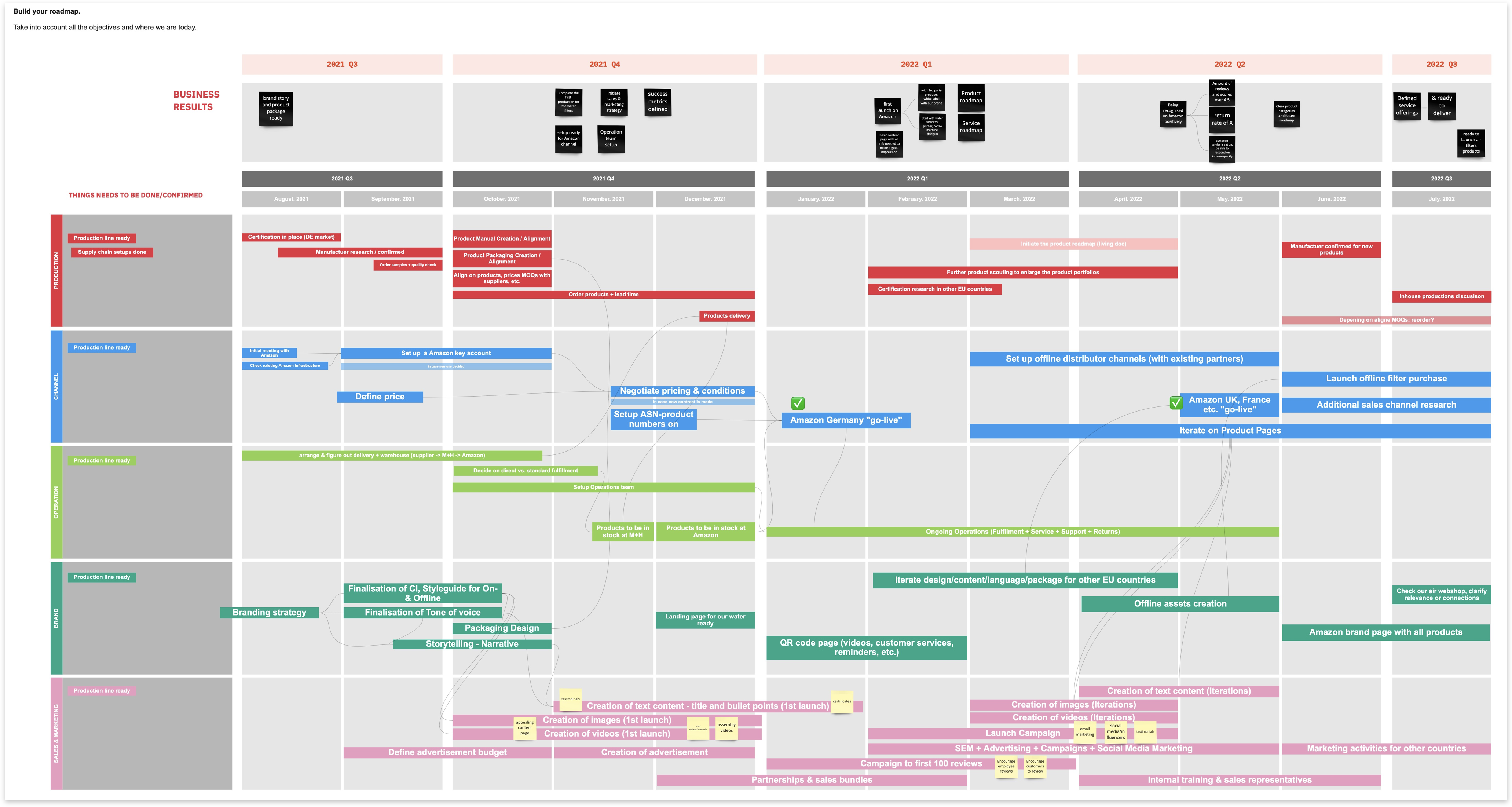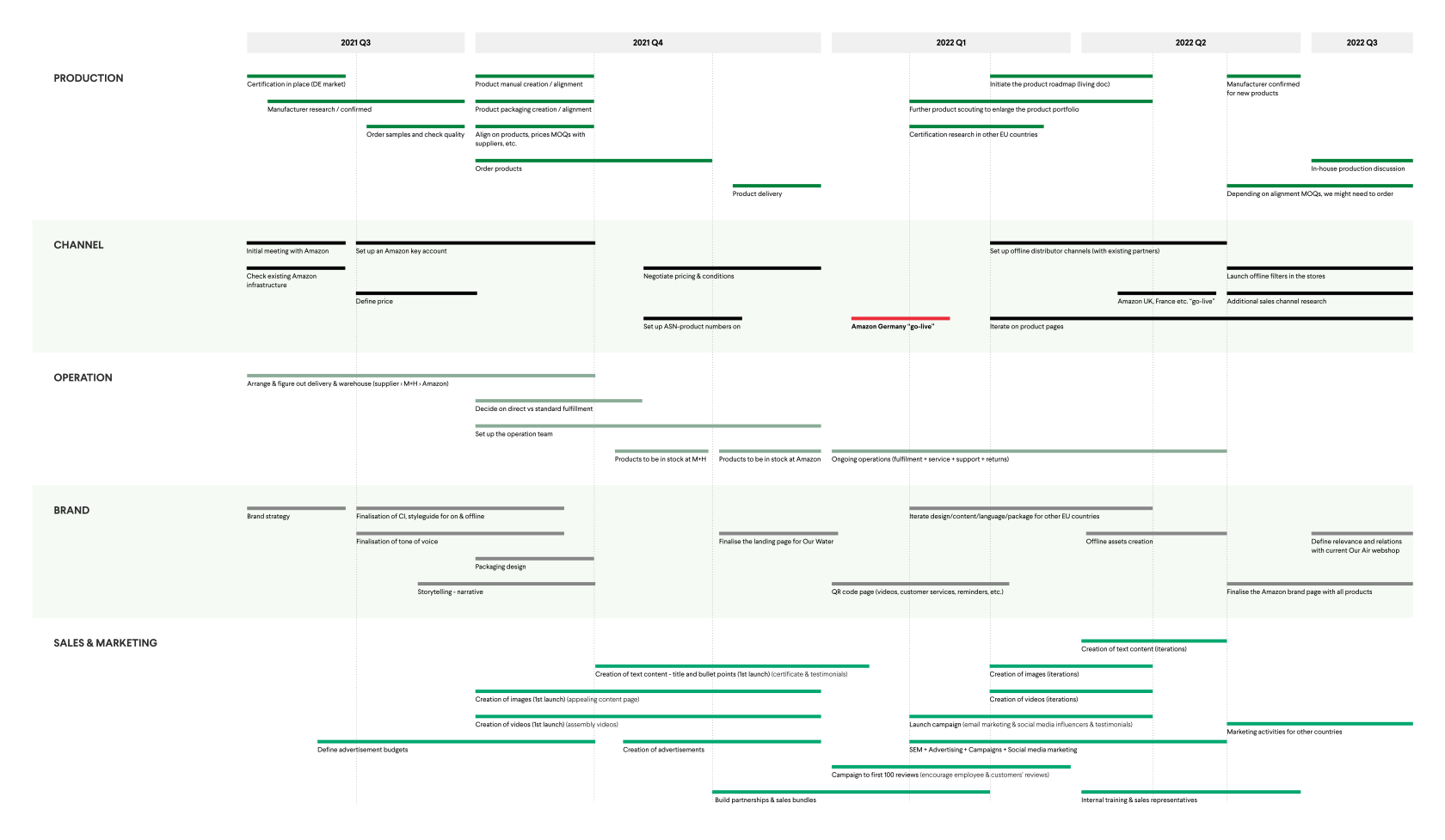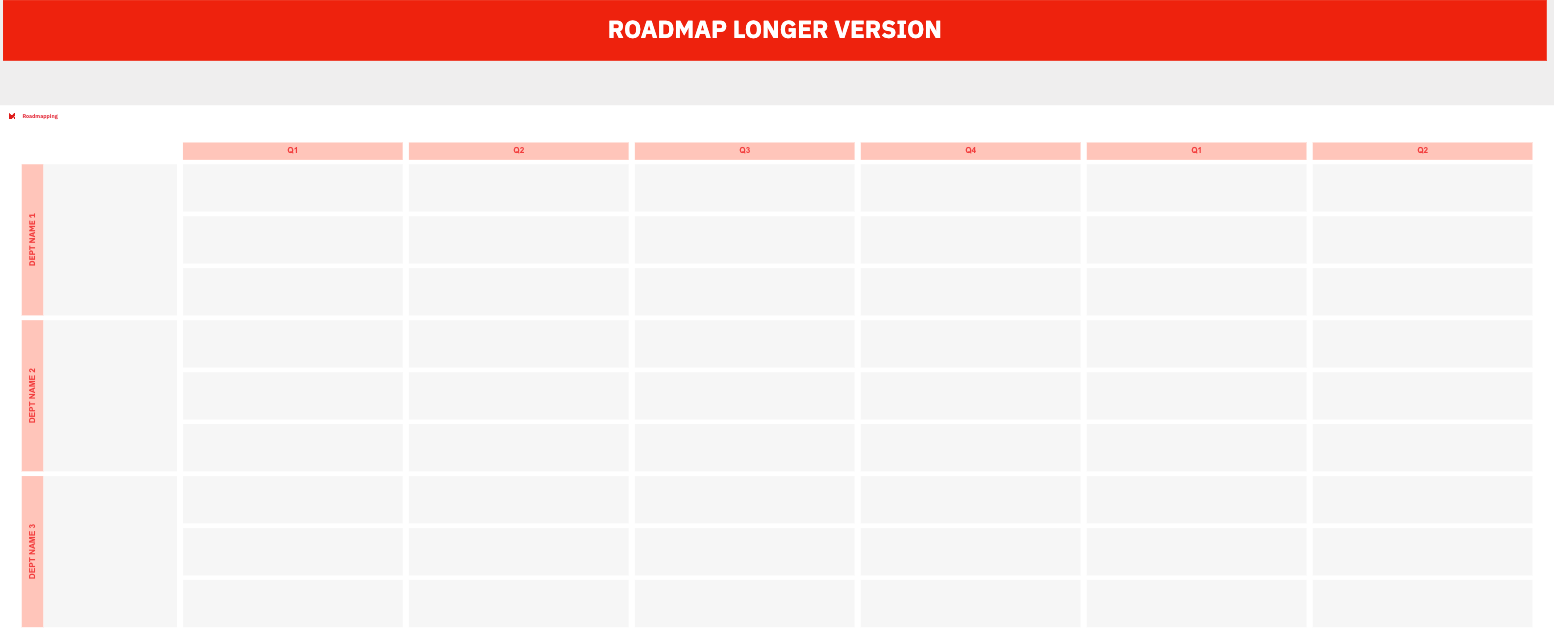¶ Implementation Roadmap
¶ What it is
An Implementation Roadmap sets out the work streams, work packages, and timelines for building and implementing the concept in the real world. This includes Production for the product or service but also operational work streams such as Sales&Marketing, Governance, HR, and more, depending on the concept and the target state.
¶ Why it is useful
With a clear Implementation Roadmap, it becomes clear what resources to plan and how to plan them, as well as how to control progress and activity against this target picture and manage the build-out of the concept.
¶ When to use it
An Implementation Roadmap should be created for any medium to high-complexity concept to ensure a clear overview of what needs to happen.

¶
¶ How is it done
- Start by reviewing the MVP Definition, Go-To-Market Strategy, and Business Model Canvas, and derive all the activities that will need to happen between today and a point in the future when the necessary work happens to create your state aiming for those. Write down all these activities.
- Cluster those activities into larger work streams or themes, such as “Product,” “Marketing & Sales,” “Operations,” etc.
- Prioritise activities within work streams, either by dependency levels (within or between work streams) or perceived importance (e.g., strategic before tactical), and assign efforts to them (e.g., duration, staffing, cost, …)
- Fill in a 4Q Roadmap Template by creating a swim lane for each work stream. Lay out the activities in the prioritised order and sequence - parallelise where possible (if you have the resources)
- Review and iterate the plan.
¶ Do's & Don't
Do's
- Think about the various work streams and activities that need to happen. Implementation is more than just Product.
- Reflect on the resources (workforce, money, time, etc.) you will have and how those will impact your roadmap. Think about whether you can acquire more help if you want to expedite.
Don't
- Don’t be over-optimistic with resources and timelines - there will always be unexpected setbacks, and you will need buffers.
- Don’t forget about dependencies within and between work streams - you will end up blocking necessary resources if dependencies are not planned correctly.
¶ Tools needed
- Whiteboard (physical or virtual)
- Post-it notes (physical or virtual)
- 4Q Roadmap Template
¶
¶ Example


_template.png)
